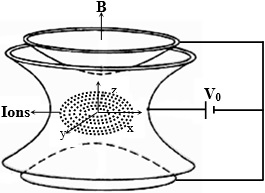Energy distribution of an ion cloud in a quadrupole Penning Trap
Keywords:
Quadrupole Penning trap, Probability of energy distribution function, Probability density of energy distribution functionAbstract
Ions are confined in Penning trap by the combination of electric field and magnetic field, as the electric field confines ions in the axial direction through an electric potential minimum and the magnetic field applied along the axis of the trap confines the ions in the radial direction. In the high temperature limit Coulomb interaction of ions can be neglected and the total energy is due to the electrostatic potential energy of the charge of ions and kinetic energy due to thermal energy. However, in the low temperature limit the trapping potential created by the dc voltage applied between the end cap and ring electrodes is cancelled by Coulomb interaction of ions and the total energy is mainly kinetic energy of ions. The probability density of energy distribution of ions along axial direction, in radial plane and total probability density of energy distribution due to resulting motion of both axial and radial motion of ions under high temperature and low temperature limits in a Quadrupole Penning trap are presented here. These results reveal the energy properties of ion cloud and are useful to carry out accurate measurement experiments on single stored particle, antiparticles with energy related parameters, under high temperature and low temperature limits in a Quadrupole Penning trap.







